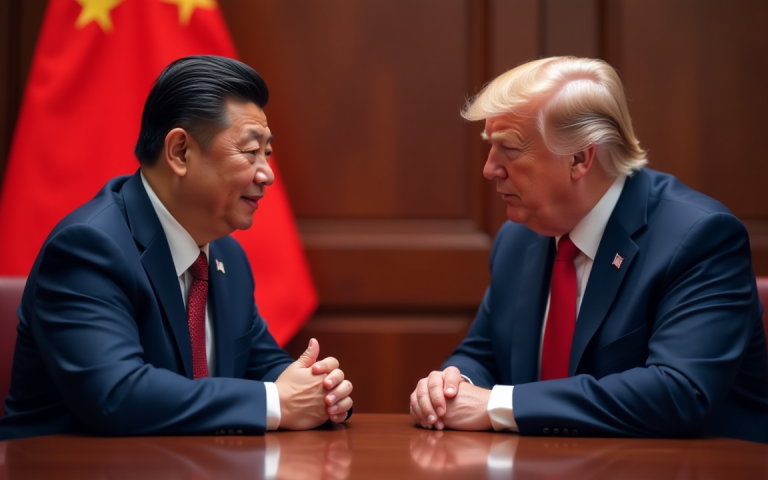The prospect of higher supply from the Organization of the Petroleum Exporting Countries and allies in the coming months will likely spell doom for oil prices.
The price of oil has experienced renewed downward pressure in recent times, evidenced by the benchmark Brent crude oil futures contract briefly dipping below the $60 per barrel mark on Thursday.
This recent decline adds to existing concerns within the energy market, raising questions about the factors contributing to this volatility and the potential implications for global economies and energy producers.
The sub-$60 level represents a significant threshold, often viewed by analysts as a key indicator of supply and demand dynamics, as well as broader macroeconomic sentiment.
“Hopes for a swift resolution to the US-China trade dispute have so far been dashed,” Barbara Lambrecht, commodity analyst at Commerzbank AG, said in a report.
Demand anxieties have resurfaced in the top two oil-consuming nations.
OPEC+ plans
OPEC+ is reportedly considering increasing production, with a decision anticipated on May 5.
This contrasts with the previously discussed supply constraints.
According to Commerzbank, the eight OPEC+ countries that have cut their production could decide to increase output for the third consecutive month in June — and, as in May, by a significant amount.
These eight countries include the likes of Saudi Arabia, the de-facto leader of OPEC, and Russia among others.
Lambrecht said:
This is likely due to disagreements within the cartel.
Evidently, certain nations are increasingly unwilling to accept the inadequate production discipline exhibited by specific member states.
Kazakhstan has demonstrably increased its oil production in recent months, a trend that directly contradicts the compensatory cuts it had previously announced as part of a broader agreement among oil-producing nations.
Kazakhstan faces uphill task
This non-adherence to agreed-upon production limits raises concerns about Kazakhstan’s commitment to the collective efforts aimed at stabilising global oil markets.
The surge in their output could potentially offset the production cuts implemented by other participating countries, thereby undermining the intended impact of the agreement.
Kazakhstan government’s efforts to curb excessive production and align with OPEC’s targets have been met with resistance, potentially straining relationships with key players in the global oil industry.
Even as it is necessary for Kazakhstan to reduce oil production to align with OPEC’s targets, it might not be entirely in the hands of the government.
Oil majors such as Chevron, ExxonMobil, Shell, Eni and Honeywell operate in Kazakhstan.
The country has been engaged in discussions with these companies to curtail production. However, it might not be in the interest of the companies to do so.
The specifics of these discussions, including any potential agreements or decisions reached, have not been publicly disclosed by the Kazakh Energy Ministry.
It remains to be seen what concrete steps Kazakhstan will take to adjust its oil output and how these actions will impact the broader oil market, especially within the context of the OPEC+ framework.
In March, Kazakhstan’s government had attributed the production increase to the expansion of the Tengiz oil field, a project primarily spearheaded by Chevron.
Accelerated increase
A renewed increase in OPEC+ production has the potential to create a substantial surplus in the oil market.
This aligns with a prior forecast from the US Energy Information Administration, which anticipated a considerable oversupply in their report issued last month, with their updated projections scheduled for release on Tuesday.
According to media reports, the eight countries within OPEC+ group are planning to go ahead with an accelerated increase in oil production in June as well.
The group had previously stated that it would raise output by 411,000 barrels per day in May, which had taken the market by surprise.
In April, OPEC+ was scheduled to raise output by 135,000 barrels per day by unwinding some of its voluntary production cuts of 2.2 million barrels a day.
April production figures will be published by OPEC in a monthly report later this month.
There have been reports that Saudi Arabia said it was prepared to live with lower oil prices, said David Morrison, senior market analyst at Trade Nation.
This comes in sharp contrast to moves over the last couple of years to support higher prices through steep OPEC+ production cuts.
Temporary demand not enough to arrest fall in prices
The expansion in OPEC’s output is likely to flood the oil market.
“Therefore, tentative signs of a recovery in demand, such as the slight increase in the selling prices of Saudi Arabian oil to Asian buyers in June expected at the beginning of the week, are unlikely to have a significant impact on oil prices,” Lambrecht said.
It is yet uncertain if China’s crude oil imports in April will lead to continued underwhelming results.
After a surprisingly large jump to over 12 million barrels per day in March, a significant drop is expected, according to Lambrecht.
The elevated import figures for March can be attributed to significant purchases from Iran, which probably took place before the enforcement of stricter sanctions.
Despite indications of decreased imports, Kpler’s tanker data analysis reveals that import volumes stayed elevated in April.
This persistence of high import levels was probably driven by the appeal of low prices, Lambrecht said.
“Given the ongoing downside pressure on global demand growth, Saudi’s comments seem unlikely to put an end to the downtrend in oil prices,” Morrison added.
But it is worth remembering that at some stage the market will run out of willing sellers. Then there will be rally, irrespective of the underlying fundamentals.
The post Analysis: OPEC’s accelerated output plan may keep oil prices volatile appeared first on Invezz










